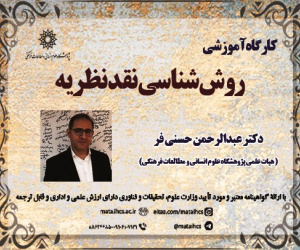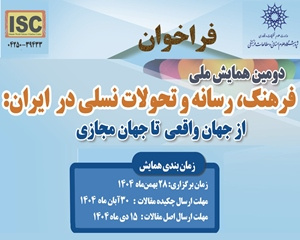علی شریعتی؛ گسست از دانشکدۀ ادبیات تا تعطیلی حسینیۀ ارشاد (مطالعه ای از منظر تاریخ شفاهی) (مقاله علمی وزارت علوم)
درجه علمی: نشریه علمی (وزارت علوم)
آرشیو
چکیده
زندگی علی شریعتی به عنوان مهمترین نظریه پرداز ایدئولوژیک انقلاب اسلامی 1357 هنوز زوایای ناگفته بسیاری در خود دارد. زندگی وی چنان که خود وی می خواست عرصه عمومی بسیار بسیط و چشمگیری داشت. گسست تبعیدوار شریعتی از دانشکده ادبیات دانشگاه مشهد و مستقر شدن او در حسینیه ارشاد نزد دوستان و دشمنان وی پرده ای است مهم و پرابهام از زندگی او. این مطالعه با اتکا بر رهیافت «نظریه بنیادی» می کوشد با اتکا عمده بر داده های حاصل از مصاحبه های شفاهی و اسناد ساواک تمام واژها حساس در این داده ها را چنان «نشانه/کد» در نظر بگیرد، از نشانه ها به سمت «مفاهیم» عزیمت کند و نهایتا «نظریه» ناظر بر حیات شریعتی در این مقطع کلیدی از زندگی او را مدون نماید. این مقطع از زندگی شریعتی را باید در قالب این «نظریه» درک کرد «تقدم رسالت بر تریبون»؛ بنابراین در هر چهار مقطع این برهه از زندگی شریعتی یعنی مقدمات و تشریفات اداری پایان دادن به حضور شریعتی در دانشکده، پیوند خوردن علی شریعتی به حسینیه ارشاد، استقرار علی شریعتی در حسینیه ارشاد و نهایتا بازنشستگی وی از دانشکده و تعطیلی حسینیه ارشاد می توان حکومت این اصل را مشاهده کرد.Ali Shariati and His Separation from the Faculty of Letters and Humanities to the Closing of Hosseinieh Ershad: A Study through Oral History
As the most prominent theorist of the 1979 Islamic Revolution, Ali Shariati lived a life which involves many untold aspects to date. His life embraced a considerably vast pubic arena, as he intended. Shariati had an exile-like separation from Mashhad Faculty of Letters and Humanities; subsequently, he settled in Hosseinieh Ershad. These events have been important, yet vague incidents in his life according to his friends and rivals. Using the Grounded Theory and data collected from oral interviews and SAVAK documents, the present study attempts to consider the resulting sensitive keywords as ‘signs’. Next, these signs are used to achieve ‘categories’ and finally, offer a set of ‘classes’ regarding the life of Shariati during such an important stage of his life. This period of his life should be understood under four major classes which include: a) the paperwork regarding the end of Shariati’s presence in the faculty; b) the beginning of his connection to Hosseinieh Ershad; c) lecturing in Hosseinieh Ershad; and d) his retirement from the faculty and the closing of Hosseinieh Ershad.







